The History of Our Family Stilt House

Hello everyone and all members of ASEAN Hive Community
Have you ever seen a house that has a shape like the one above? In Indonesia, we call it “Rumah Panggung”, a house on stilts is a traditional house that is widely used by various ethnic groups in Indonesia. The shape of this house is in the form of a stage, which is a condition where the base of the house is not attached to the ground, the height of the house varies depending on local conditions.
House on stilts
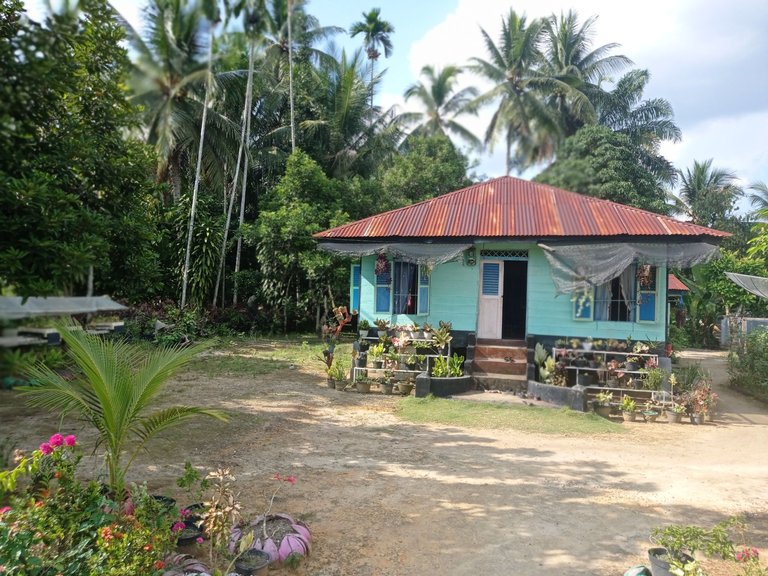
As far as I know, several countries in Southeast Asia also have this traditional house shape. I once read a literature about the comparison of houses on stilts in Thailand, Vietnam, and Malaysia. We should not be surprised, because the culture and way of life of people in Southeast Asia are not much different, and we know that at that time making houses with wood was cheaper and easier to obtain than cement or bricks.
Generally, stilt houses can be easily found in coastal areas in Indonesia. This house is purposely made to prevent flooding from high tides, so the house will not be submerged by water. The foundation of this house uses wooden poles, floors from wooden boards, walls from wooden boards or bamboo. All these building materials are connected with nails and ropes. All the materials use lightweight materials, and are safer in the event of an earthquake.
Indonesia is very familiar with earthquakes. Our country is one of the countries that has the largest number of active volcanoes in the world, besides our country is also located on the border of the earth's plate so that the potential for earthquakes is very possible at any time. Unfortunately, the existence of houses on stilts has begun to disappear and is no longer used by rural communities in Indonesia, because they are considered ancient and outdated.
Hometown History
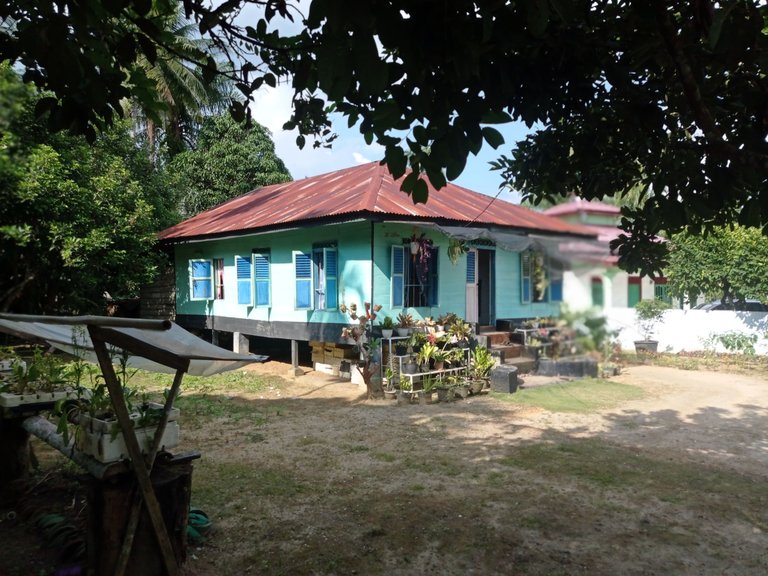
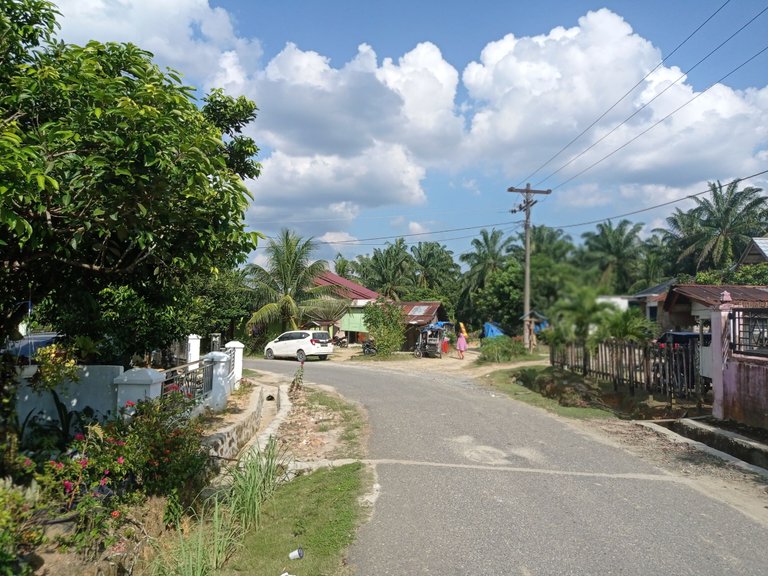
The photo of the house on stilts above is the house of my grandfather, the house where my father and brother were born. As a child I once asked my father why this house is shaped like this (a house on stilts)? what I knew at that time, a house on stilts was a house commonly used by fishermen or coastal communities.
Last weekend, I went to my father's hometown. My father is from Bandar Gula Village, a small village in Labuhan Batu Regency, Rantau Prapat. Our family came to this village to attend our brother's wedding. I have many childhood memories in this village, and also many things I want to share when I come there. However, this time I want to tell you about something that will surely be of interest to all of you.
My father also explained to me about the history of why we arrived in this village. Initially, this village was still a wilderness, my grandfather and his younger brother left Binanga Tolang Village, the village they used to live in to look for a new location (opening new agricultural land). For some reason, my grandfather was able to arrive at a place that would later become a village. This location used to be feared by many people, firstly because this place (this village) is considered a very mystical place and secondly, many wild animals such as tigers and snakes exist in this village.
To avoid attacks from the tigers and snakes, my grandfather built a stilt house. My father said, when he was a child he had several encounters with tigers. However, according to him, since the late 70's, no tiger has ever appeared in Bandar Gula Village, but snakes are still often found. Therefore, the next generation made a house that as usual (not in the form of a house on stilts).
Besides the reason to avoid wild animals, the stilt house that my grandfather made was probably to save on making rooms and beds. When at my grandfather's house, no one slept in the room (there was no room there) but we slept in the living room, like refugees. But the moment was very funny and fun, because we and my brother slept in the same room. However, everyone was annoyed with me when I slept together, because my snoring made it difficult for them to sleep.
Relaxing Place
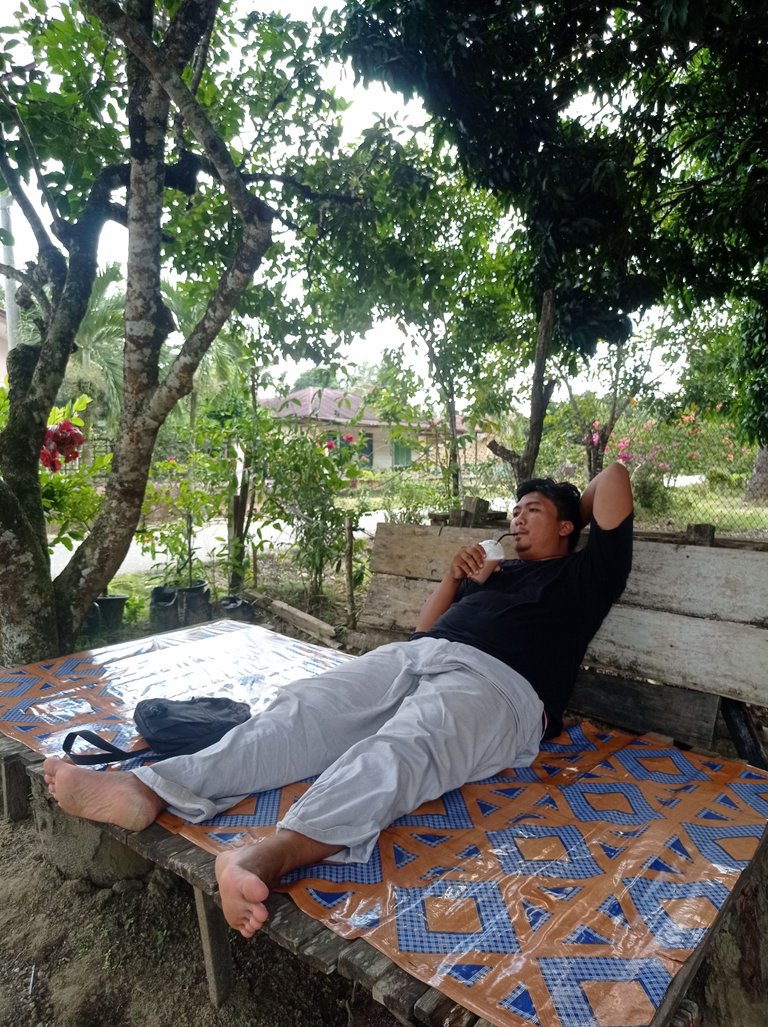
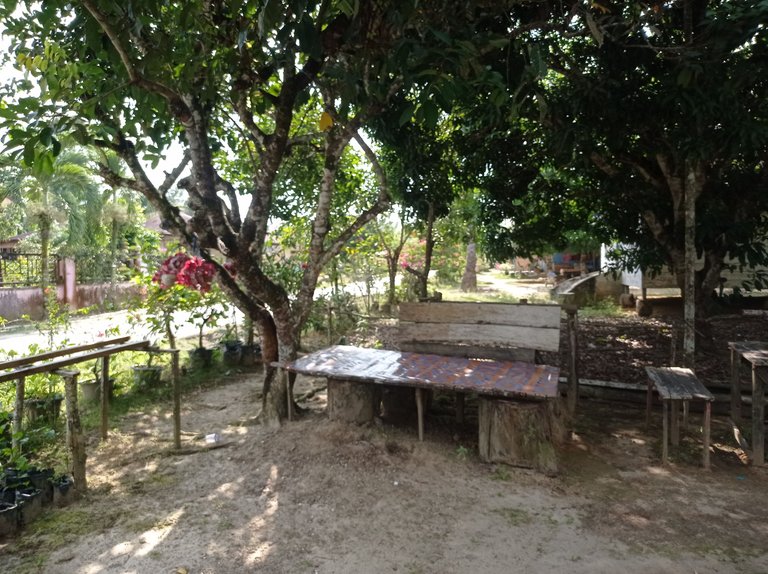
"Knowledge and power in the city; peace and civility in the village." - Mason Cooley
One of the characteristic places in Bandar Gula Village is that each house has a relaxing place to sit under a tree. I really like the moment sitting and lying in this place. The breeze and the shady atmosphere made me forget the intricacies of life's problems.
We call this seat “bale”, in the afternoon usually several people will sit and tell stories to each other. Interaction between residents and social life is very important for everyone who lives in the village.
City life is desired by many people, including villagers. The city promises hope for a better life. However, not everyone can stand to live with the hustle and bustle of urban society. Many people become stressed and fed up, so even though they have a lot of money, they have to spend it on entertainment or self-healing.

Call me Isdarmady, because I have a full name that is very long, namely Isdarmady Syahputra Ritonga. I am a head of the family who work as Farmers Vegetables Hydroponic and Consultant Hydroponics, sometimes I also sell coffee from various regions in Indonesia.
I have expertise dispensing coffee with a variety of techniques and tools brewing, because I have the desire to make a coffee shop with hydroponics as centerpieces. Help me realize that dream.
Thanks for read, vote, re-blog and support me in Hive. Maybe god will reward the kindness, let’s success together.
Your 'bale' is equivalent to what we call 'lagkaw', a small hut with cogon grass or nipa leaves roof and bamboo structure, mostly built beside a tree or under a tree used for siesta and just to relax outside the main house. I use to live a stilt house type and gradually the houses construction is changed when concreting and hollowblocks houses became famous here in Philippines.
thank you for stopping by..
it seems our culture really likes to relax, that's why places like 'bale' or 'lagkaw' are made in front of the house.
Where do you prefer to live? a house on stilts or a house as it is today. Remember, you have lived in both types of houses.
As of today, we are now transitioning to a what we are doing today. Since stilts houses used mainly wooden materials and getting hard wood is not an option because it will be hard to find it now. Concrete materials are more affordable and available.
Yes, we like to relax under the trees with when the sun is too hot to bear, like the afternoon.
yes, that's right, in the past the price of wood was still cheap and we got quality wood. at this time, the price of wood is also expensive and Currently in my country, if anyone makes a big house with lots of wooden ornaments, it must be a rich person.
There is nothing more pleasing when sleeping under a tree, while enjoying the breeze in the afternoon.
When you mentioned animal attacks as another reason for stilted houses, I immediately thought of the tribal areas of northeastern Cambodia. There are some groups there that build their homes more than 7 meter in the air, I assume historically because of living in the forest and the risk of animal attacks.
wow, 7 meters off the ground. I'm sure no one has a phobia of heights there (just kidding). However, I think it shouldn't be that high, except to prevent elephant attacks. In Indonesia there are also some indigenous ethnic groups, we call them 'suku anak dalam (jungle people)' who still live in trees and forests. Currently, they still reject civilization, but some have acculturated with modern culture.
⋆ ᴛʜᴇ ᴘʟᴀᴄᴇ ғᴏʀ sᴏᴜᴛʜᴇᴀsᴛ ᴀsɪᴀɴ ᴄᴏɴᴛᴇɴᴛ ᴏɴ ʜɪᴠᴇ
⋆ sᴜʙsᴄʀɪʙᴇ ᴛᴏ ᴛʜᴇ ᴀsᴇᴀɴ ʜɪᴠᴇ ᴄᴏᴍᴍᴜɴɪᴛʏ
⋆ ғᴏʟʟᴏᴡ ᴛʜᴇ ᴀsᴇᴀɴ ʜɪᴠᴇ ᴄᴏᴍᴍᴜɴɪᴛʏ ᴠᴏᴛɪɴɢ ᴛʀᴀɪʟ
⋆ ᴅᴇʟᴇɢᴀᴛɪᴏɴ ʟɪɴᴋs 25 ʜᴘ⇾50 ʜᴘ⇾100 ʜᴘ⇾500 ʜᴘ⇾1,000 ʜᴘ
I grew up in a stilted house in Australia - its common for wooden houses in the north of Australia to be raised on stilts to keep the airflow circulating and the house nice and cool.
thank you for stopping by
I just heard there is a house on stilts there, but it's true that living on a house on stilts we get natural cold because of the wind circulation.
My late grandmother house was a traditional Melanau house and the height was really tall. The reason behind it, is because on the old days, the village was always flooded during rainy season, and also to avoid wild animals attack especially crocodile 😅😅😅
These types of houses are very common in the countryside where I live and yes, I think it is primarily to prevent flooding but also for pest prevention like snakes and rats too.